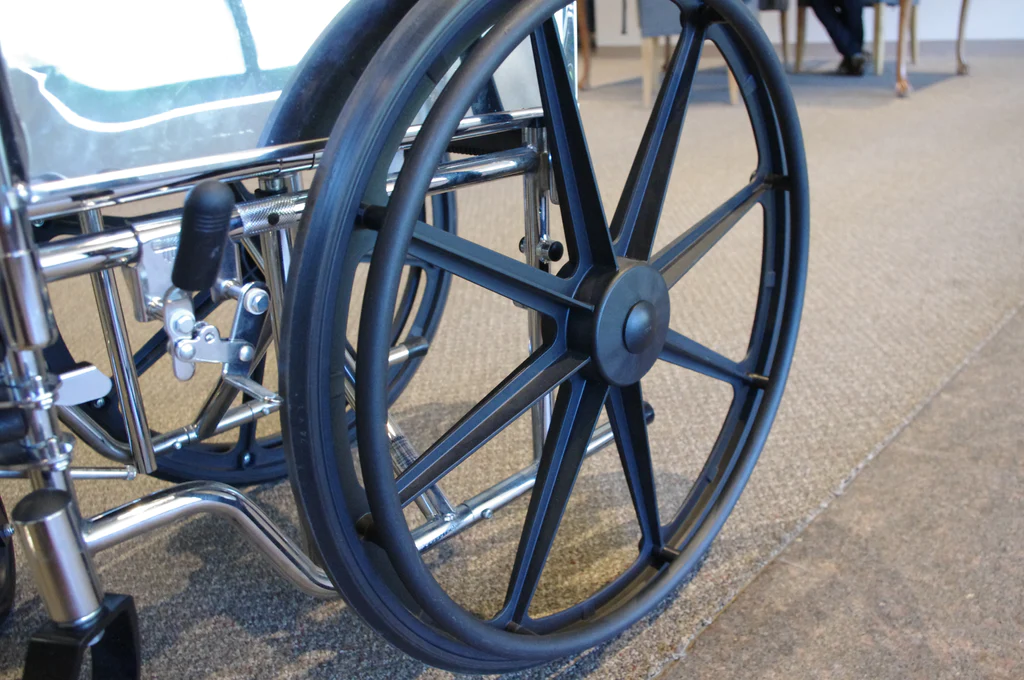Choosing the right wheelchair wheels can greatly enhance your mobility and overall comfort. Whether you are an athlete engaged in wheelchair sports or an individual looking for everyday use, selecting the best wheelchair wheels is crucial. In this guide, we’ll walk you through the factors to consider when making this important decision.
- Wheelchair Sports
If you’re an athlete interested in wheelchair sports, your wheel choice will be particularly important. The wheels you select can significantly impact your performance on the court or track. For those involved in wheelchair sports, it’s essential to choose wheels that are designed for high-performance, agility, and stability. Wheelchair sports demand precise maneuverability, so look for wheels that can provide exceptional traction and responsiveness. [Learn more about wheelchair sports here](insert hyperlink to wheelchair sports).
- Wheel Diameter
Wheel diameter plays a vital role in your wheelchair’s performance. Smaller wheels offer better maneuverability and are suitable for tight spaces, but they might require more effort to push. Larger wheels, on the other hand, provide a smoother ride and roll over obstacles more easily. When selecting your wheel diameter, consider your specific needs and the terrain you’ll be navigating.
- Wheel Material
Wheelchair wheels are typically made from either rubber or pneumatic (air-filled) tires. Rubber tires are solid and maintenance-free, providing durability and resistance to punctures. Pneumatic tires offer a softer ride and better shock absorption, making them ideal for outdoor use. Consider your lifestyle and how you plan to use your wheelchair to determine which tire type is right for you.
- Wheelchair Rim Style
The rim style affects your grip on the wheel and ease of propulsion. There are two main rim types: handrim-coated and handrim-uncoated. Handrim-coated wheels have a rubber or foam covering, providing a comfortable grip. They are ideal for everyday use. Handrim-uncoated wheels are usually made of metal and offer a firmer grip, making them suitable for sports and activities where maximum control is needed.
- Spoke Configuration
The spoke configuration impacts the weight and aerodynamics of your wheelchair. Fewer spokes reduce weight and improve aerodynamics but might sacrifice some durability. More spokes enhance wheel strength but may add weight. The choice between fewer or more spokes depends on your priorities – whether you prioritize speed and agility or durability and stability.
- Quick-Release vs. Fixed Axles
Wheelchair wheels can have either quick-release or fixed axles. Quick-release axles allow for easy removal of the wheels for transport or storage, making them convenient for everyday use. Fixed axles, on the other hand, provide greater stability and are suitable for sports and rigorous activities. Your choice depends on your specific needs and preferences.
- Budget Considerations
Wheelchair wheels come in various price ranges, so it’s essential to set a budget before you start shopping. High-end wheels designed for sports or advanced mobility may come at a higher cost. However, for everyday use, there are affordable options that provide excellent performance and durability.
Conclusion
Selecting the best wheelchair wheels requires careful consideration of your needs, preferences, and lifestyle. Whether you’re a wheelchair sports enthusiast or need a reliable everyday mobility solution, the right wheels can make a world of difference. Evaluate factors such as wheel diameter, material, rim style, spoke configuration, and axle type to find the perfect fit for your needs. With the right wheels, you can enjoy improved mobility and comfort in your daily life or excel in the world of wheelchair sports.

